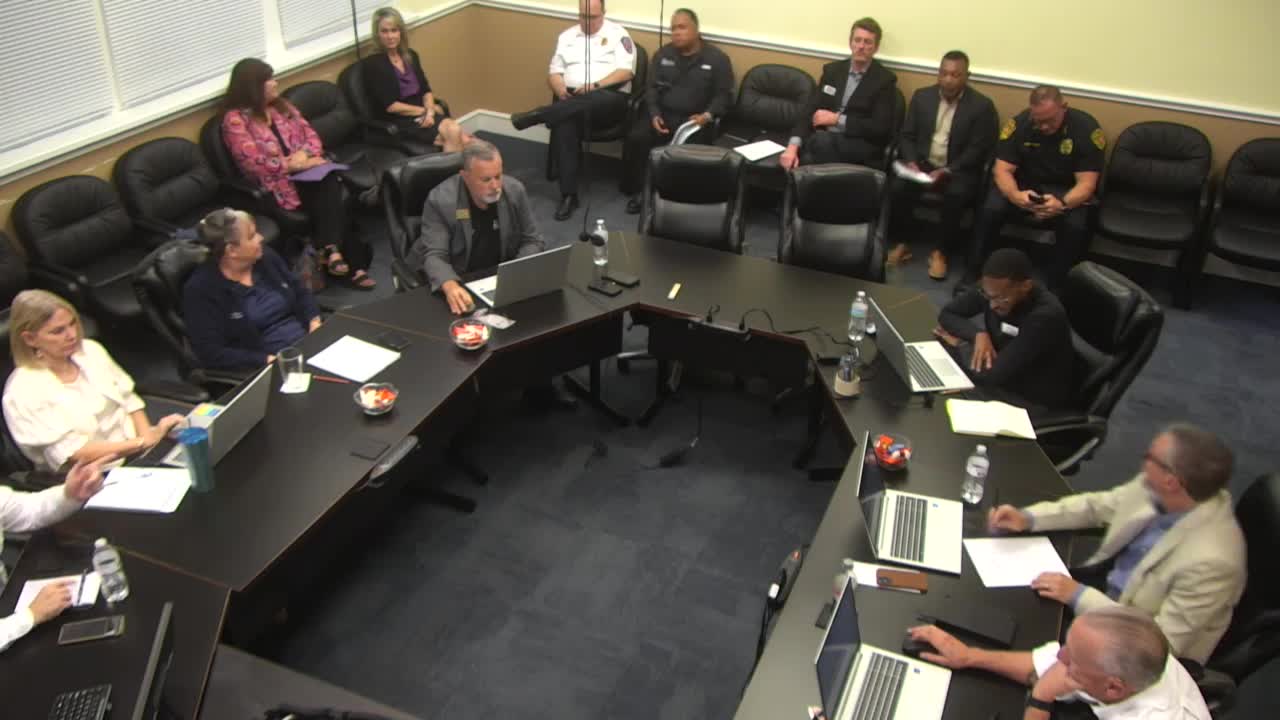Rowlett staff outline code‑enforcement changes: longer hours, mobile tech and focus on proactive work
October 13, 2025 | Rowlett City, Dallas County, Texas
This article was created by AI summarizing key points discussed. AI makes mistakes, so for full details and context, please refer to the video of the full meeting. Please report any errors so we can fix them. Report an error »

Rowlett’s code enforcement division reported on Oct. 13 that it has restructured hours and is pursuing mobile technology and workflow changes to shift officers from paperwork to field time and improve response times.
Assistant Director Andrew Espinosa and staff outlined the division’s current staffing — one code manager, four residential district officers, one single‑family rental registration officer and one commercial officer — and explained that officers cover roughly 5,000 residential parcels each. Staff said they have reimagined schedules and now cover 7 a.m.–9 p.m. on weekdays and extend Saturday hours (11 a.m.–9 p.m.) to allow proactive enforcement, including collecting illegal “bandit” signs.
The division said response‑time goals vary by service type (initial responses of 1–3 days for many complaints) and noted a rising workload: total reported violations rose from about 3,000 in 2021 to almost 9,000 in 2025 (two service types were recently added). Rental inspections increased markedly (from 986 to 1,635) as staff identified rental properties through utility billing and other methods.
Staff emphasized technology as a force multiplier: they have deployed two fully outfitted vehicles with on‑the‑spot printing and plan to expand mobile equipment to reduce office paperwork (currently about half of officers’ time is spent in the office). They are pursuing an enterprise approach to routing resident reports (citizen app/work‑order integration) and recommended short‑term rental monitoring software, digital forms, and a consolidated work‑order system so citizen requests are routed to the correct department.
Councilmembers raised common concerns: residents need clearer guidance on whom to call for public‑vs‑private issues; proactive “sweeps” and outreach to HOAs were discussed as ways to increase voluntary compliance; and single‑family rental registration workload could create capacity pressures if the number of registered rentals grows further. Staff said they will continue outreach, pursue technology investments with IT, and, if necessary, return during the mid‑year budget to request additional resources.
Assistant Director Andrew Espinosa and staff outlined the division’s current staffing — one code manager, four residential district officers, one single‑family rental registration officer and one commercial officer — and explained that officers cover roughly 5,000 residential parcels each. Staff said they have reimagined schedules and now cover 7 a.m.–9 p.m. on weekdays and extend Saturday hours (11 a.m.–9 p.m.) to allow proactive enforcement, including collecting illegal “bandit” signs.
The division said response‑time goals vary by service type (initial responses of 1–3 days for many complaints) and noted a rising workload: total reported violations rose from about 3,000 in 2021 to almost 9,000 in 2025 (two service types were recently added). Rental inspections increased markedly (from 986 to 1,635) as staff identified rental properties through utility billing and other methods.
Staff emphasized technology as a force multiplier: they have deployed two fully outfitted vehicles with on‑the‑spot printing and plan to expand mobile equipment to reduce office paperwork (currently about half of officers’ time is spent in the office). They are pursuing an enterprise approach to routing resident reports (citizen app/work‑order integration) and recommended short‑term rental monitoring software, digital forms, and a consolidated work‑order system so citizen requests are routed to the correct department.
Councilmembers raised common concerns: residents need clearer guidance on whom to call for public‑vs‑private issues; proactive “sweeps” and outreach to HOAs were discussed as ways to increase voluntary compliance; and single‑family rental registration workload could create capacity pressures if the number of registered rentals grows further. Staff said they will continue outreach, pursue technology investments with IT, and, if necessary, return during the mid‑year budget to request additional resources.
View the Full Meeting & All Its Details
This article offers just a summary. Unlock complete video, transcripts, and insights as a Founder Member.
✓
Watch full, unedited meeting videos
✓
Search every word spoken in unlimited transcripts
✓
AI summaries & real-time alerts (all government levels)
✓
Permanent access to expanding government content
30-day money-back guarantee

